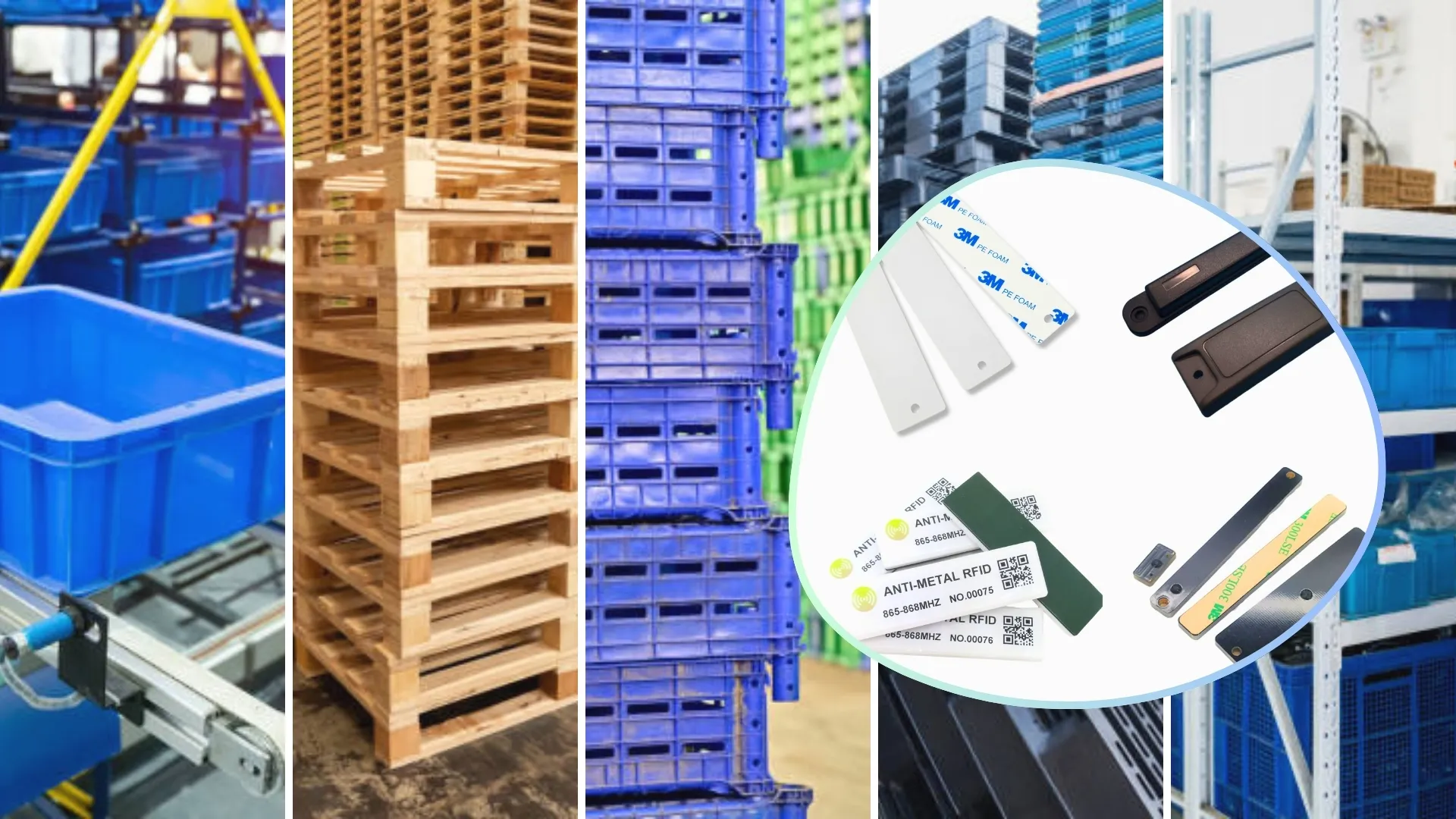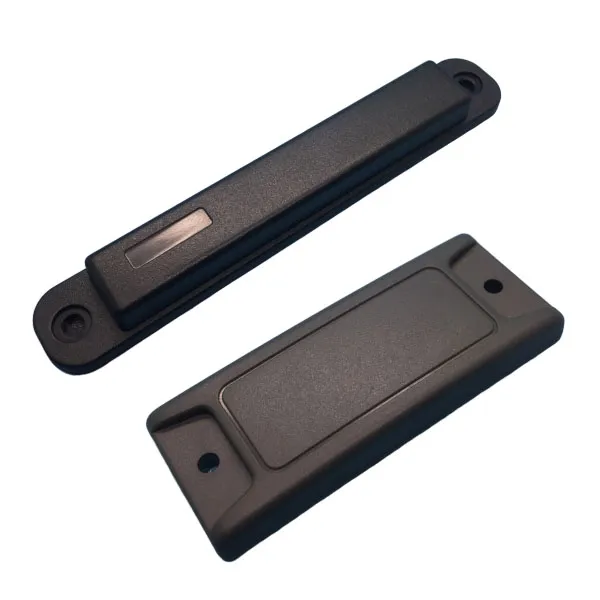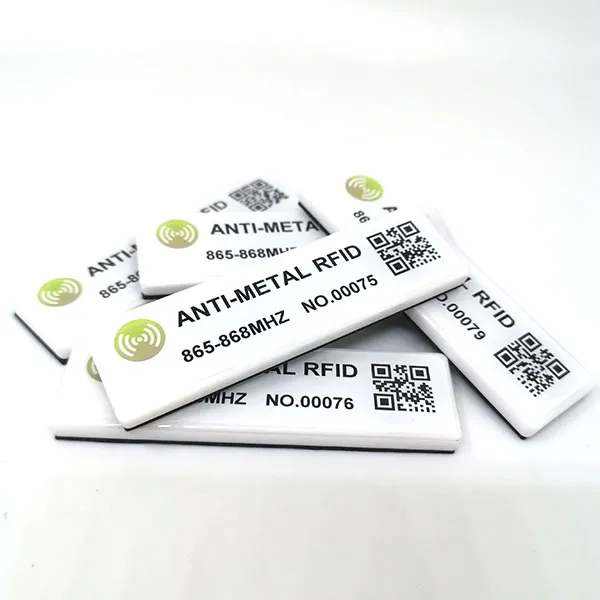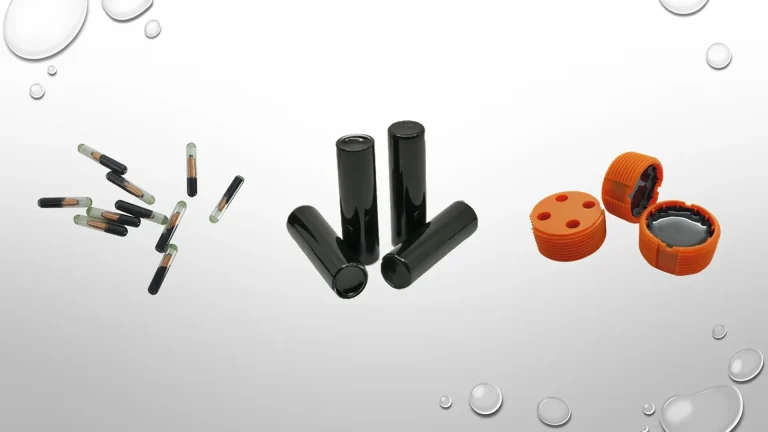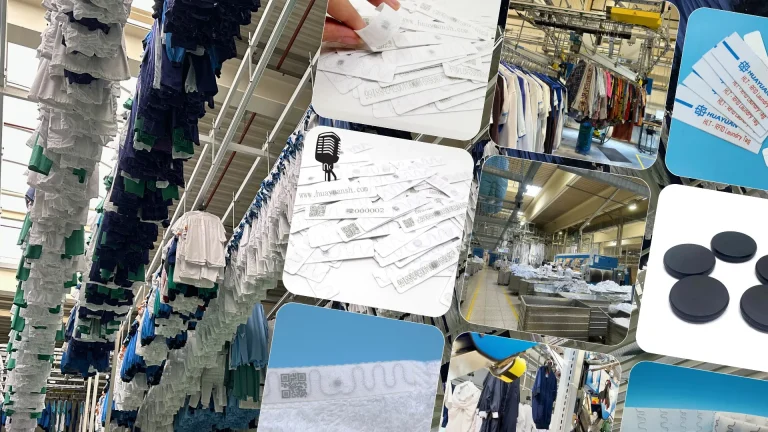Enhancing Pallet Management with RFID Technology
Why Combine RFID Technology into the Pallet Management?
Many companies lease pallets, crate, roller cage, turnover box, and other logistics containers in order to offload the cost of maintaining their own pallet fleet. However, Due to the variety of product materials and the increase in the scale of logistics and distribution, the use of logistics turnover boxes and other containers has become more and more, and the phenomenon of loss of turnover boxes has also increased, which resulted in higher and higher management costs. The managing return of these items has often proven challenging for pallet providers.
RFID technology is increasingly being combined with pallet tracking systems due to its ability to provide real-time, accurate, and automated data capture. Traditional barcode systems, while effective, require line-of-sight scanning and manual handling, which can be time-consuming and prone to errors. In contrast, RFID tags can be read remotely, do not require direct line-of-sight, and can simultaneously transmit data from multiple tags to an RFID reader.
By incorporating RFID technology into pallet tracking, companies gain real-time visibility of inventory, reduce labor costs, minimize human errors, and enhance overall supply chain efficiency. This is particularly valuable in industries where pallets and containers frequently move between various locations, such as pallet leasing, industrial production control, automotive, and food industries.
The Benefits of Using RFID Technology for Pallet Management
- Improved Inventory Accuracy and Visibility: RFID technology enables real-time tracking of pallets, providing accurate and up-to-date information on inventory levels. This helps companies reduce overstocking and stockouts, optimize inventory management, and ensure timely deliveries.
- Enhanced Operational Efficiency: RFID systems automate the tracking process, reducing the need for manual labor and human intervention. This automation speeds up operations, lowers labor costs, and minimizes the risk of human errors, leading to improved overall productivity.
- Faster Data Collection and Processing: Unlike barcodes, which must be scanned one by one, RFID readers can capture data from multiple tags simultaneously. This accelerates the process of data collection and reduces the time spent on inventory checks and audits.
- Enhanced Traceability and Compliance: RFID technology allows companies to track the movement of goods throughout the supply chain, enhancing traceability and helping them comply with regulatory requirements. This is particularly useful in industries such as pharmaceuticals, food, and beverages, where traceability is crucial for safety and quality control.
Implementation of RFID for Pallet Tracking
Implementing RFID technology for pallet tracking involves several steps:
- Assessment and Planning: The first step is to conduct a thorough assessment of the existing supply chain processes to identify the areas where RFID can be most beneficial. This involves analyzing the types of goods being tracked, the environment in which the technology will be used, and the specific requirements for data collection and management.
- Tag Selection: Choosing the right type of RFID tags is crucial for successful implementation. The tags must be suitable for the pallets and containers being tracked, considering factors like the material of the pallets, the environmental conditions, and the required read range.
- Reader and Infrastructure Setup: Installing RFID readers at key points throughout the supply chain, such as entry and exit points, storage areas, and transportation vehicles, is essential for capturing data. The infrastructure should be designed to ensure maximum coverage and data accuracy.
- Software Integration: Integrating the RFID system with existing inventory management and enterprise resource planning (ERP) software is necessary to ensure seamless data flow and real-time visibility. This integration allows companies to manage their inventory more effectively and make data-driven decisions.
- Training and Testing: Training staff to use the new technology and conducting extensive testing to identify potential issues is crucial for successful implementation. Testing helps ensure that the system operates effectively and meets the organization’s specific needs.
Challenges and Limitations of RFID in Pallet Management
While RFID technology offers numerous benefits, there are also several challenges and limitations to consider:
- High Initial Costs: The cost of RFID tags, readers, and infrastructure can be relatively high compared to traditional tracking methods, especially for small and medium-sized enterprises. This can make the initial investment a significant barrier to adoption.
- Interference Issues: RFID signals can be affected by various factors, such as metal objects, liquids, and environmental conditions, which may reduce their effectiveness. Proper planning and testing are required to mitigate these interference issues.
- Privacy and Security Concerns: As RFID technology can transmit data over a distance, there are potential privacy and security concerns related to unauthorized data access. Ensuring that the RFID system is secure and complies with data protection regulations is essential.
- Data Management Complexity: Implementing RFID technology generates a large volume of data, which can be challenging to manage and analyze. Organizations must have robust data management systems in place to handle this data effectively.
- Limited Read Range of Passive RFID Tags: Passive RFID tags, have a limited read range compared to active tags. This can be a limitation in environments where long-range tracking is required.
Selecting the Right RFID Technology
RFID tags are classified into two types—active and passive—based on how they transmit frequency signals.
Active RFID Tags: These tags have a built-in battery, allowing for a long read range but are more expensive. They are mainly used for applications requiring long-range detection of valuable items.
Passive RFID Tags: These tags do not have a battery and are generally less expensive, but their read distance and storage capacity are limited by power availability. In logistics applications, where the required working distance is within 2 meters and storage capacity needs are moderate, passive RFID tags are typically the best choice.
RFID frequencies used in logistics applications include high frequency (HF) and ultra-high frequency (UHF):
HF (High Frequency): HF tags have a reading distance of up to 1.5 meters and a strong ability to read tags through objects.
UHF (Ultra-High Frequency): UHF tags, particularly those conforming to RAIN RFID technology (passive UHF RFID that meets GS1 EPC Class 1 Gen2 or ISO 18000-63 standards), offer a longer reading distance of 3 to 9 meters but have weaker penetration capabilities.
For managing RFID tags on pallets and turnover boxes, where the typical reading distance is about 2 meters and penetration through objects is not required, UHF tags are a suitable choice.
Types of Passive RFID Tags for Pallet Management
Considering the working environment of pallets, HUAYUAN recommends and can provides below UHF RFID tags:
LogiFlex UHF RFID Pallet Tag
LogiFlex UHF RFID Pallet Tags are laminated PVC tags that can be easily installed on plastic pallets using screws or adhesive, and are built to withstand collisions and general wear. The key benefit of LogiFlex tags is their low cost, making them an excellent choice for large-scale applications. Additionally, they can be fully customized with logos, barcodes, and other information in color, offering a versatile and cost-effective solution for use in indoor or mild outdoor settings.
Plastic Housing RFID Tags
Plastic Housing RFID Tags provide robust durability, making them suitable for environments with moderate exposure to mechanical impacts or dust. These tags can be mounted on plastic containers using screws or adhesive, providing a dependable option for tracking pallets and containers within warehouses or industrial settings. While they are more expensive than PVC alternatives, Plastic Housing RFID Tags remain affordable and strike a good balance between cost and durability.
Versatile RFID UHF Tag
Versatile RFID UHF Tags are moderately priced and well-suited for indoor use, especially for applications involving metal cages. They offer an excellent balance between cost, durability, and functionality, making them a flexible choice for various industrial applications.
PCB RFID Tags
PCB RFID Tags are premium tags engineered for harsh and demanding environments. They are ideal for applications where superior durability is essential, such as in industrial sites with extreme conditions. These tags offer outstanding performance in environments exposed to chemicals, moisture, and significant temperature fluctuations, making them the preferred choice for the most challenging operational scenarios.
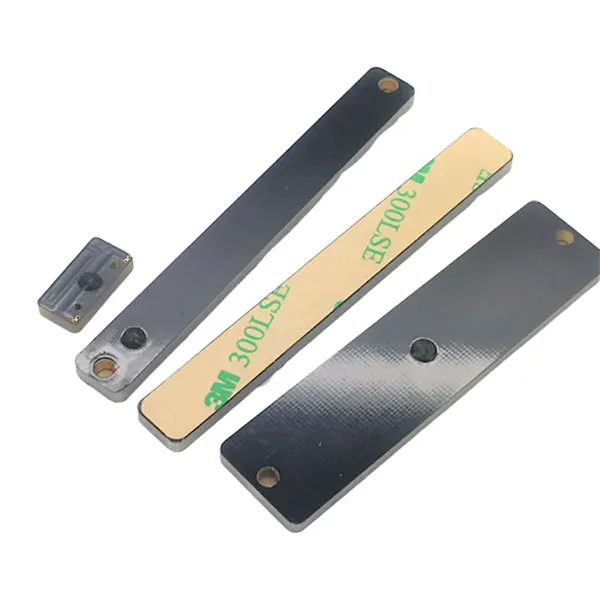
Get in Touch
Contact us today to learn more about the right RFID solution for your business. Our team of experts is here to help you select the best tags, implement the necessary infrastructure, and ensure a seamless integration into your existing systems. Let us help you achieve a smarter, more efficient supply chain.

